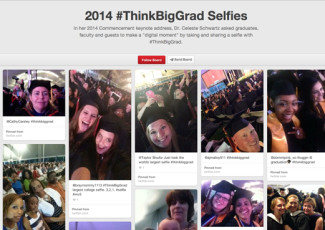Part 1: 5 Ways to Use Social Media to Prepare for Campus Events
By Ellen Ullman
December 16, 2015
Get a better handle on the climate at your college with these tips.
Editor’s Note: This is the first article in a two-part series about how community college leaders are using social media.
Community college students have been using social media to connect with one another for at least the past decade, but in the past two months or so, activity to organize protests and find out what’s going on at different campuses has ramped up.
Some students use online platforms to anonymously send threats and make aggressive, racist or bigoted statements, but this practice may become less common, says Angus Johnston, a student activism scholar who teaches history at the City University of New York’s Hostos Community College.
“There have been three recent cases in which students posted what they thought were anonymous comments, but the websites or Internet service providers turned over information to the police that helped catch the perpetrators.” Knowing this, other students may think twice about posting such threats online.
Keeping an eye on social media
College presidents and administrators are wise to monitor social media before something happens on their campuses. Here are some tips to help you stay plugged in and savvy about the ways of social media:
- Understand when action is needed and — even more important — when it isn’t. “There is a real danger in administration getting too heavily involved with complaints and other social media expressions,” Johnston says. “If you are monitoring this and threatening disciplinary action, you’re running the risk of legitimate pushback.”
- Address the root causes and the immediate triggers of student anger and unrest. Students often express their anger and disappointment when they are unhappy with faculty and administrators. Given that, Johnston says it’s crucial for faculty and administrators to respond before situations escalate. “Facilitating student involvement in campus governance, empowering elected student representatives, listening to leaders in the cultural unions — all this is vital.”
- Keep the lines of communication open. As Johnston says, if you wait until students are occupying the hallway outside your office to have your first conversation, the chat will not be a good one. Invite a broad group of students to an open house so you are exposed to a variety of perspectives. “Chatting with students informally allows you to hear what’s going on in a nonobtrusive, unaggressive way.” But be careful with the words you choose, he warns. “Different students have different expectations about the way in which we talk about things, and it’s easy for someone who is not plugged in to a particular community to unintentionally give offense.”
- Use social media to keep yourself informed. Be careful about following your own students, Johnston says, but take advantage of the wider world of social media. To broaden your perspective, follow people who don’t run in the same circles. Search hashtags on Twitter, and read what people are saying about the issues; that will give allow you to keep your finger on the pulse of your community.
- If you mess up offline or online, admit your mistake. “If you unintentionally give offense, you’ve made the interaction more difficult, and your ability to resolve the situation has been compromised. Don’t blame anyone else for not understanding your intention — acknowledge the problem, apologize and try to get back on track.”
For more information on this topic and American student organizing, read Johnston’s blog at studentactivism.net and follow him on Twitter.
Stay tuned for tomorrow’s post on community college leaders using social media.







